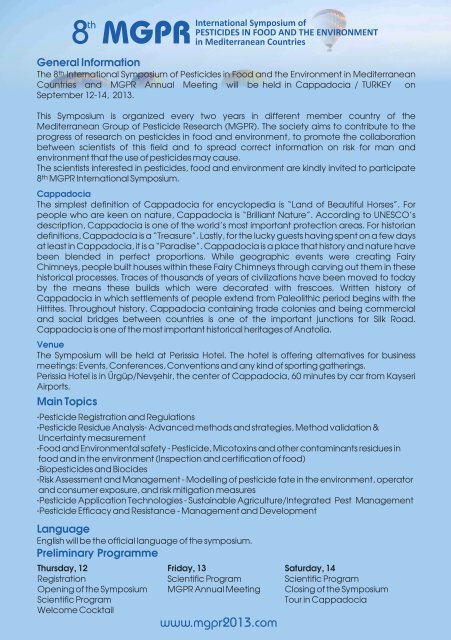The present-day “Münzgasse” is one of the oldest laneways in Dresden,with a history dating back to the time of the city’s founding in 1206. Its location on thebanks of the Elbe was the site of a ford long before the Augustus Bridge was built.The margraviate of Meissen experienced a rapid boom in the 12 th century followingsilver findings in the Ore Mountains. One of the historic “silver routes” led to Dresdenvia Freiberg, gaining access to the eastbound and westbound trade routes hereon the Elbe. The intense trade on the Elbe river-crossing ultimately promptedDresden’s rise to prosperity.Until 1849, the “Münzgasse” residential street was called “Newe”/“Große Fischergasse”, serving as a reminder of the fact that old Sorbian fishing villagesonce lined both sides of the Elbe. The village of Drezdany (old Sorbian: bog forest inhabitants,alluvial forest inhabitants), which was located in what later became known as Neumarkt(New Market), is what ultimately gave Dresden its name.Even in 1500, the lane was still situated outside the city walls, which originallyonly ran around the present-day Altmarkt (Old Market), and it was not untilthe extension of these walls in 1525 that the present-day Münzgassewas incorporated into the municipality.“Münzgasse” (“coin lane”) was named after the electoral Neue Münze (“New Coin”)mint, built in 1773 and located behind the Frauenkirche. Along with the master coiners,it was the craftspeople from the Töpfergasse, the merchants from the Jüdenhof andthe more dignified lords strolling in Brühl’s Garden or through the art exhibits who usedto gather here. The dock at Brühl’s Terrace, situated right next to Münzgasse, was the startingplace for the royal family’s outings in the 18 th century. In magnificent gondolas, they wouldsail on the Elbe between their residential palace here in the old town and the lavishsummer palace in Pillnitz.While the regents would entertain themselves at the city palace, the subservient souls– wagoners, coachmen and stablemen – would stop for a bite to eat at the former“Kleppereck”, where the horses were also given water to drink.The inn was located just next to the stables built here on Münzgasse in 1588, and becamepopular as a refreshment stop for humans and animals alike. The history of this traditionaldistrict is kept alive by the rustic tavern today called the “Kutscherschänke”,where one can wine and dine to one’s heart’s content.
International Symposium ofPESTICIDES IN FOOD AND THE ENVIRONMENT8 th <strong>MGPR</strong> in Mediterranean CountriesRegistration Fee1. Registration including 3 lunches, 4 coffee breaks, welcome cocktail, congress's materials(name badges, congress bag, congress CD, congress's abstract book, certificate etc):250 EUROs2. Registration plus transfer from/to airport and social events including 3 lunches, 4 coffeebreaks, welcome cocktail, Whirling Dervisches Show, Turkish Night Gala Dinner, Tour inCappadocia (Kaymaklı Underground City, Goreme and Zelve Valley, Potterry, Uchisar,Avanos etc.) 4 arranged transfer by bus on arrival and departure dates from Kayseri Airportand back, congress's materials (name badges, congress bag, congress CD, congress'sabstract book, certificate etc): 350 EUROs3. Registration & Accommodation SINGLE ROOM for 3 nights including 3 lunches, 4 coffeebreaks, welcome cocktail, Whirling Dervisches Show, Turkish Night Gala Dinner, Tour inCappadocia (Kaymaklı Underground City, Goreme and Zelve Valley, Potterry, Uchisar,Avanos etc.) 4 arranged transfer by bus on arrival and departure dates from Kayseri Airportand back, congress's materials (name badges, congress bag, congress CD, congress'sabstract book, certificate etc ): 550 EUROs4. Registration & Accommodation DOUBLE ROOM per person for 3 nights including 3 lunches, 4coffee breaks, welcome cocktail, Whirling Dervisches Show, Turkish Night Gala Dinner, Tour inCappadocia (Kaymaklı Underground City, Goreme and Zelve Valley, Potterry, Uchisar,Avanos etc.) 4 arranged transfer by bus on arrival and departure dates from Kayseri Airportand back, congress's materials (name badges, congress bag, congress CD, congress'sabstract book, certificate etc ): 500 EUROs5. DOUBLE ROOM per person as ACCOMPANYING PERSON for 3 nights including 3 lunches,welcome cocktail , Whirling Dervisches Show, Turkish Night Gala Dinner, Tour in Cappadocia(Kaymaklı Underground City, Goreme and Zelve Valley, Potterry, Uchisar, Avanos etc.) 4arranged transfer by bus on arrival and departure dates from Kayseri Airport and back:350 EUROsNOTE: <strong>MGPR</strong> Membership fee (50 EUROs) is included in Option (1-4)Students should pay 50 EUROs less for each option (Students are required to send the currentdocument demonstrating student status)Registration Deadline: 1 st of MayLate registration fee: 50 EUROs plus for each optionCall for PapersOral presentation will be selected to complement invited lectures. Authors may indicatetheir preference for presentation but final decision on acceptance will be made byscientific committee. Abstracts should be sent to the Symposium secretariat(secretariat@mgpr2013.com)stDeadline for abstract submission: 1 of MayFurther information on the Symposium will be available on the web site: www.mgpr2013.comwww.mgpr2013.com








